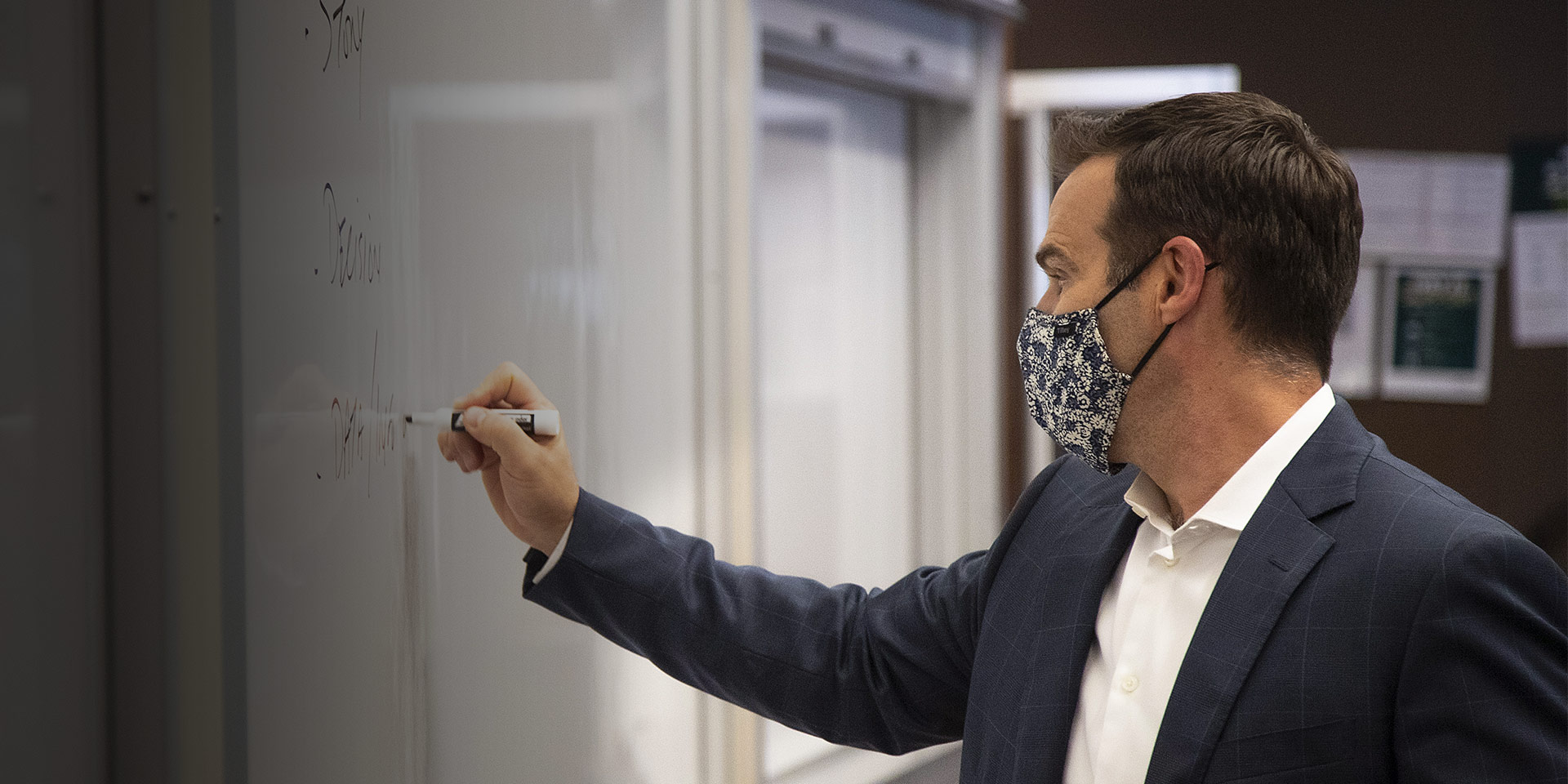It began at birth.
In 1919, as Western began to develop a business program, Sherwood Fox, Western’s Dean of Arts and Science, and K.P.R. Neville, the University’s registrar, were tasked with researching North American business programs and determining the best model for Western. The two men, Classics scholars by profession, quickly concluded that the Harvard Business School (HBS) model was the right option. Wrote Fox: “Outstanding was our judgment that the course given at the Harvard Business School appeared to offer the soundest and most satisfactory of all methods under scrutiny — the case system.”
From there, the School’s legacy began.
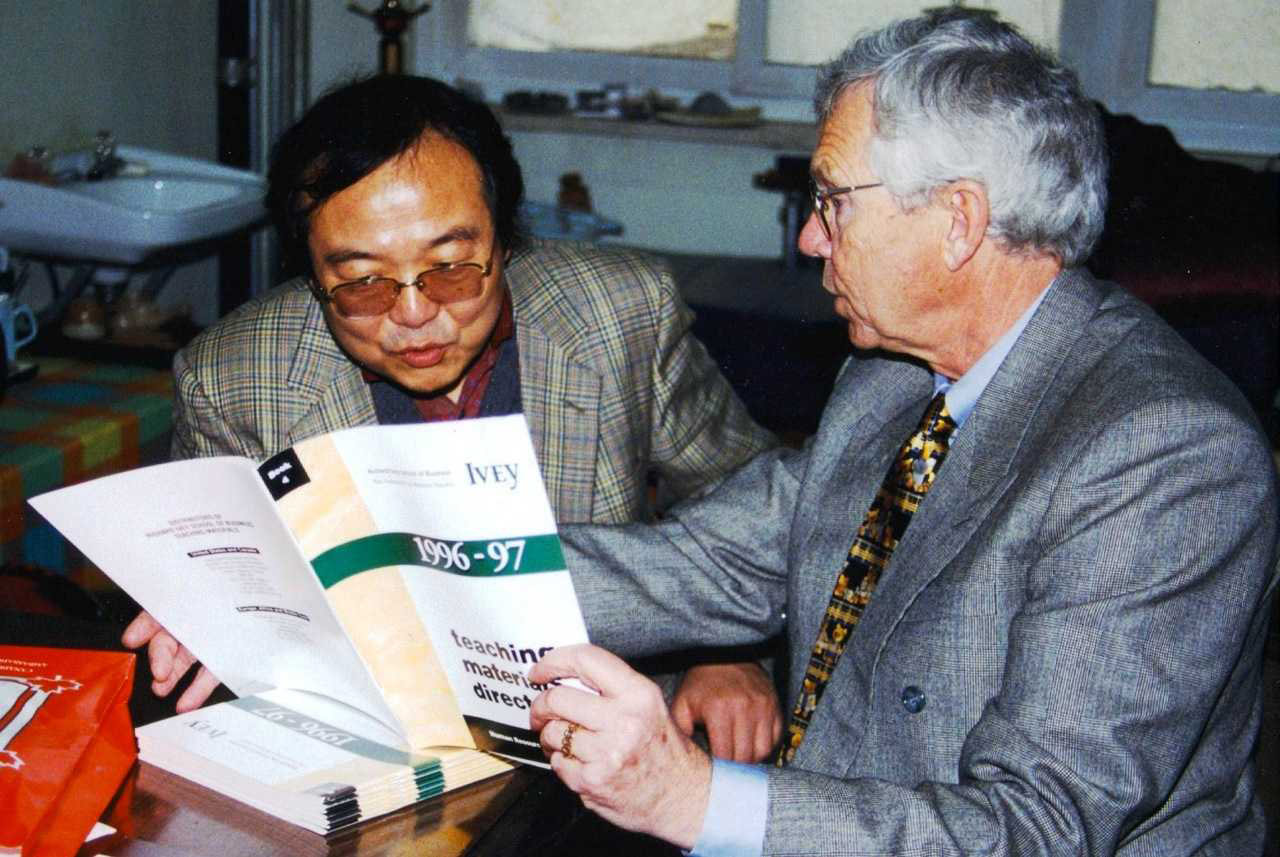
Professor Jae Ho Park, attending a workshop at Seoul University South Korea, 1997
Case teaching gets under way
Having seized on case teaching as a competitive advantage, the two recruited a Canadian with a degree from Harvard, Ellis H. Morrow, to oversee the new business program. The first published Harvard case was The General Shoe Company, a one-page case that described the problem of workers becoming less productive toward the end of their shifts. It’s likely that The General Shoe Company was also the first used at Western.
The course calendar for 1922-23 reflects the extent to which case teaching had already become integral to the program. For example, the course description for Marketing Problems read, “The course will be handled entirely by means of problems to be assigned once every two weeks and to be reported on in writing. The student will be left to his own resources to discover the general facts of business practice and commercial conditions bearing on each problem.”
School of Business continues focus on case teaching
After the Second World War, as the demand for business education ramped up again, there was a move to create a separate school of business. By then, Western was producing its own cases. Walter Thompson, head of the Department of Business Administration from 1938 to 1942 and Professor from 1945 to 1972, wrote in 1947, “The case approach to business study has definitely been established. We now have two courses operating solely on our own materials.”
Over the years, the School stayed true to its commitment to case teaching. Bud Johnston, Dean from 1978 to 1989, wrote: “Among the more important aspects of the School’s culture was an extraordinary commitment to excellence in teaching by the case method and the development of our students’ analytical, decision-making, and implementation skills as practicing general managers.”
Leenders and Erskine make their mark
Professor Emeritus Mike Leenders, MBA ’59, recalls coming to the School from a lecture-format program in mining engineering at the University of Alberta.
“The case method was a total eye-opener,” he says.
In 1968, he and Professor Emeritus Jim Erskine, MBA ’67, both experts in operations management, decided there must be a way to write more and better cases, and they began to research the topic. In 1973, they published their first book on the case writing process. It became the basis for the annual Ivey case writing workshop, and soon they were invited to deliver it at universities around the world.
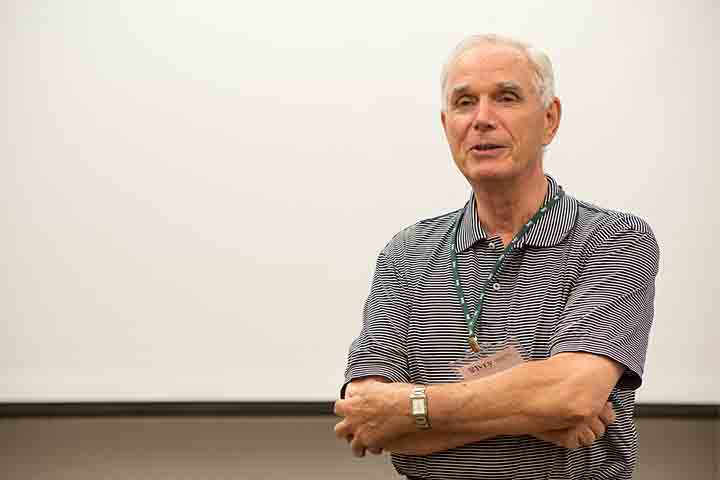
“The case method was a total eye-opener.”
– Professor Emeritus Mike Leenders, MBA ’59
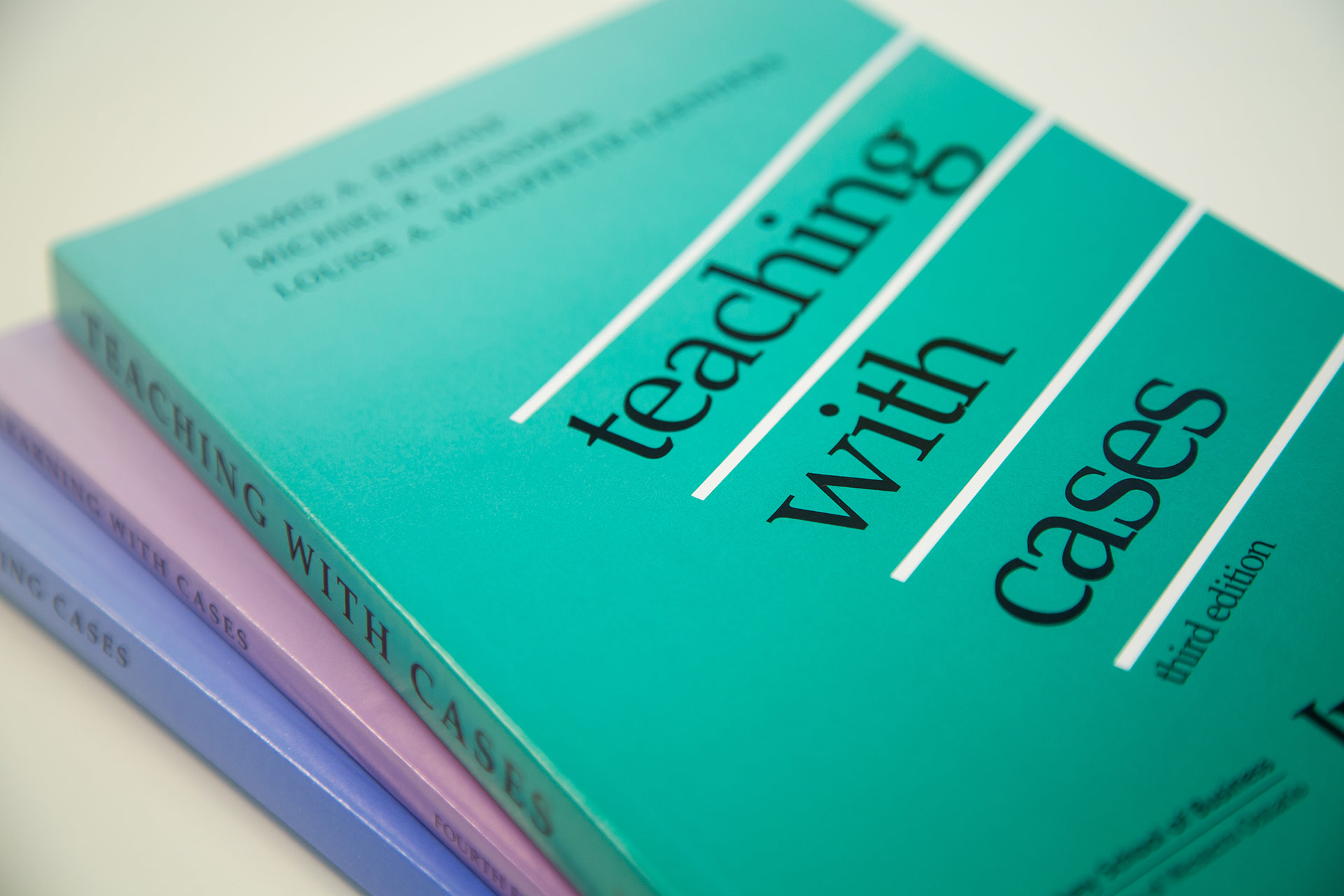
Their second book, Teaching with Cases, followed in 1981. It was also the result of years of research and included the reflections of more than 100 case teachers. It became the basis for the annual Ivey case teaching workshop. Louise Maufette-Leenders co-authored the book and became lead author of Learning with Cases, a guide for students published in 1992. The three books had gone through 14 new editions by 2023, and been translated in Chinese, Japanese, French, Spanish, Portuguese, and Italian. David Wood, HBA ’97, MBA ’12, who was at the time Faculty Director of the Accelerated MBA program (AMBA) and Executive Director of Ivey Publishing, became lead author of the latest editions.
By 2014, Leenders and Erskine had taught over 200 invited workshops in 55 countries across seven continents, reaching more than 20,000 individual teachers. All three books are still in print and are regularly updated. New Ivey faculty are offered case teaching and case writing workshops and receive coaching and support from their colleagues. Faculty members are also expected to do research and write cases on a regular basis, a practice that ensures, says Erskine, “They have one foot in the classroom and the other in the business environment.”
For many years, Ivey has been the second-largest producer of business cases in the world, after Harvard Business School. Ivey Publishing counts more than 35,000 cases in its vault, with close to 6,000 active cases, and new cases are added at a rate of 30 per month.
Case teaching evolves
While the principles of case teaching have remained constant, approaches have evolved over time.
Although most cases take the form of words on paper, field trips and visits from case protagonists have long been used to enrich the experience. In 1992, former acting dean Al Michalachki, MBA '60, PhD '64, wrote that, “In the early ’60s, case discussion in its purest form prevailed … Although the case is still our major teaching method, recent methodologies include videos, lectures, computer simulations, exercises, and a variety of interactional experiences.”
The use of technology has only increased since then. In 1995, Ivey established a videoconference Executive MBA program led by Professor Terry Deutscher. Twenty-four years later, Ivey launched the AMBA program, also successfully blending remote and in-person learning. That, in turn, set Ivey up to pivot in March 2020 to fully online learning during the first year of the pandemic.
“We were able to leverage what we’d learned,” says David Wood. “What had been online in AMBA became asynchronous, and what had been in person became synchronous.”
It worked.
Wood says case learning has evolved in other ways, too. Originally dealing primarily with general management issues in private sector companies, cases today explore the challenges of not-for-profits, government, social enterprises, and even health care and engineering, and constantly evolve to address the key issues facing business. Most schools now use cases, but not always with Ivey’s insistence on authenticity.
“We don’t make up cases,” says Maufette-Leenders.
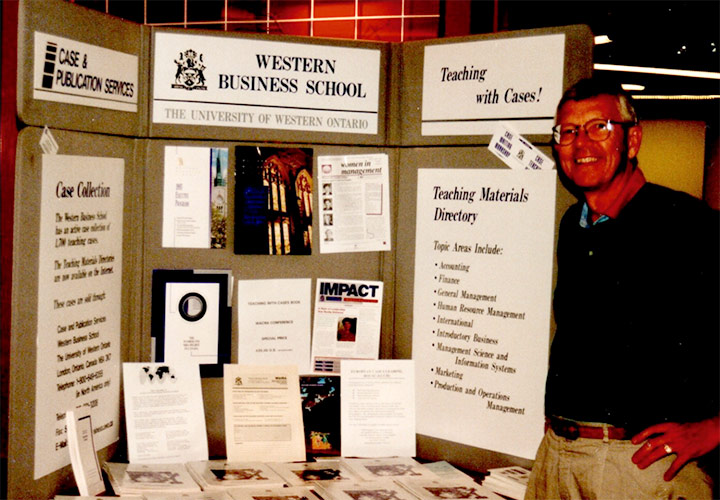
Professor Emeritus Jim Erskine, MBA '67, at an event in Leysin, Switzerland circa 1995
Why it works
Alumni are enthusiastic supporters of the case learning method, often reflecting on its impact on their careers.
“Learning with cases helps you talk through the problem and the alternatives to resolve it,” says Genevieve Eccleston, HBA ’13. “And that’s what you do every day on the job – so how better to prepare you for a career?”
Peter Lowas, MBA ’10 agrees, adding, “Case learning allows you to test-drive solutions in a very comfortable space with nothing at risk. It gives you room for error and room to grow.”
Entrepreneur Keisha Bailey, MBA ’15, says case learning inspired her to start her own business.
“It was a catalyst, helping me develop a way of thinking and an approach to problem-solving. Because I’d studied so many businesses through the time at Ivey, I felt ready to start my own,” she says.
The future of the case method is assured, but it will continue to evolve, Wood says. While in-person learning is clearly here to stay, research has shown that interactive online learning tools – videos, peer discussions, interactive exercises, and other activities – can supplement or even replace traditional readings or lectures, making case preparation more effective and the in-person discussion richer. Virtual reality offers exciting new opportunities.
From follower to world leader
One hundred years ago, Ivey followed the Harvard lead. Today, it is a world leader in every aspect of the case method. Why has this methodology continued to dominate? Professor Adam Fremeth, HBA ’00, and David Wood recently summed it up.
“Like a good workout, case-method teaching is about sets and reps, which enable students to develop wisdom and understanding over the length of the program. Cases are deeply involved in the ambiguity-laden, career-making, pressure-packed decision-making of real people in real situations.”
Anthony Ostler, MBA ’97, President and CEO of the Canadian Bankers Association, has seen the transformative impact of case learning in his own career.
“As the world grows and evolves, and you deal with more complexity and ambiguity, the case method gives you a skill set to continually grow and evolve so you can address new problems as they arise,” he says. “It’s not about memorization; it’s about learning to solve problems.”
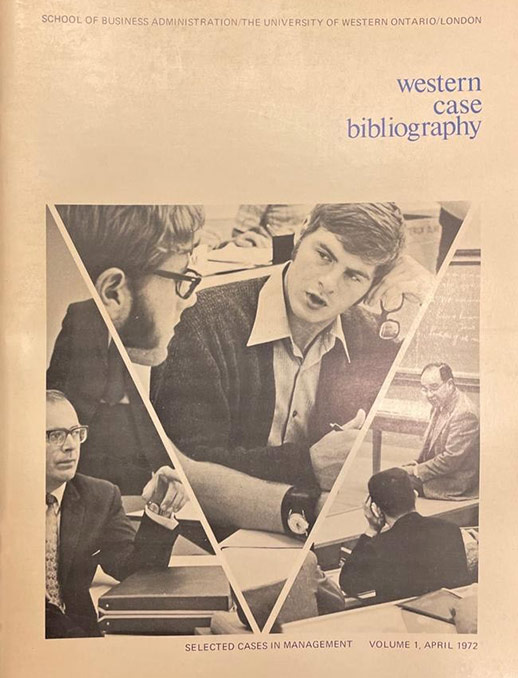
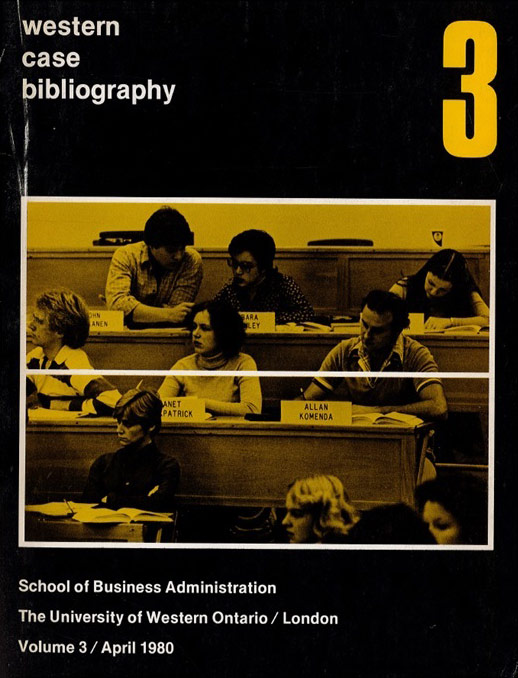

Notable Ivey Publishing cases in the last century
Whether they’ve stood the test of time, made an impact around the world, or addressed a critical issue of the day, Ivey’s cases have made their mark in the classroom and beyond. Here’s a list of notable cases from Ivey Publishing (IP), selected by Publishing and Marketing teams.
- International Bank of Malaysia Limited (Joseph J. DiStefano)
Note: Oldest case still active on the IP ecommerce site. - Starbucks (Mary M. Crossan, MBA ’85, PhD ’91; Ariff Kachra)
Note: One the bestselling cases of all time, a favourite in classrooms around the globe. - Sugar and Spice Bakery: The Catering Opportunity (Elizabeth M.A. Grasby; Jessica Welsh)
Note: Grasby has written more than 200 cases currently available in the IP collection. This one is a global bestseller that continues to be used in classrooms every year since its publication. - Eli Lilly in India: Rethinking the Joint Venture Strategy (Charles Dhanaraj; Paul W. Beamish, HBA ’76, PhD ’84; Nikhil Celly)
Note: Bestselling case at IP for 12 consecutive years (2006-17). Also considered a classic case at Harvard Business Publishing. - The Breaking the silence Case series (Alison Konrad; Kanina Blanchard; Karen MacMillan, PhD ’13)
- Breaking the Silence At Work (A) & (B)
- Breaking the Silence: Engaging Challenges Faced by the LGBTQ+ Community (with Vishal Vijay, HBA ’22)
- Note: The series was first published by IP in 2020, and it offers students the opportunity to recognize and explore challenges faced by individuals and groups intolerance and discrimination. It should be noted that IP worked with the Ivey faculty authors to offer these cases for free through IP in hopes of supporting faculty around the world in addressing these challenging issues.
- Michael McCain: Tweeting on the Maple Leaf Foods Account (Gerard Seijts; Stephen R. Foerster, HBA ’81; Kersi Antia; Lee Watkiss; Jana Seijts)
Note: A very unique case written in the form of just seven tweets, but versatile in how it’s taught. - Aspire Food Group: Marketing a Cricket Protein Brand (Miranda R. Goode; Emily Moscato)
Note: An IP bestseller that is part of the SDG collection. It should be noted that working with Ivey authors to tag and build the collection has been an important focus for the last few years. - The Global Branding of Stella Artois (Paul W. Beamish, HBA ’76, PhD ’84; Anthony Goerzen)
Note: Bestselling case at IP, 2010-11, 2005-2006, 2004-2005, 2003-2004, 2002-2003, 2001-2002. - Ellen Moore (A): Living and Working in Korea (Henry W. Lane; Chantell Nicholls; Gail Ellement)
Note: An IP classic case - Better World Fashion: Circular Economy and Competitive Advantage(Reimer Ivang; Mohammad Bakhtiar Rana)
This article was prepared for World Case Teaching Day 2023.
